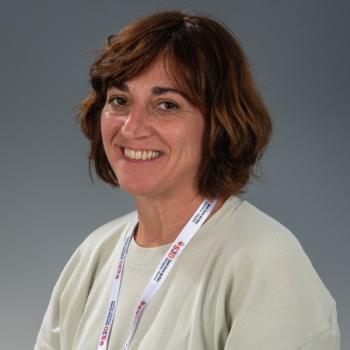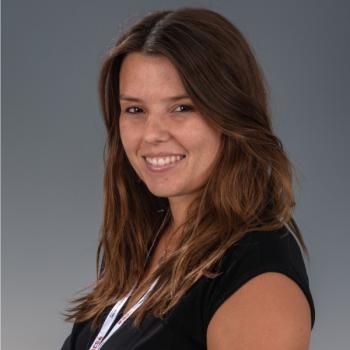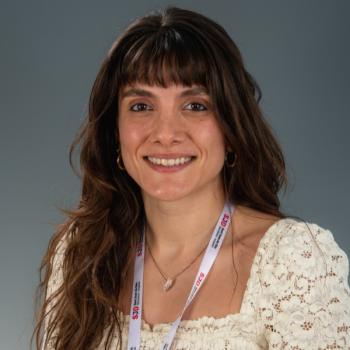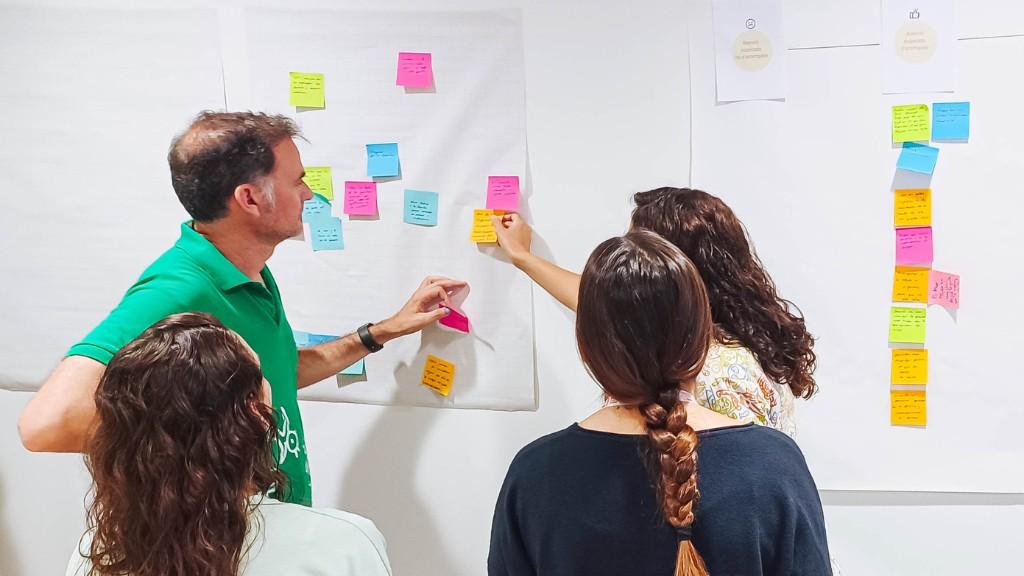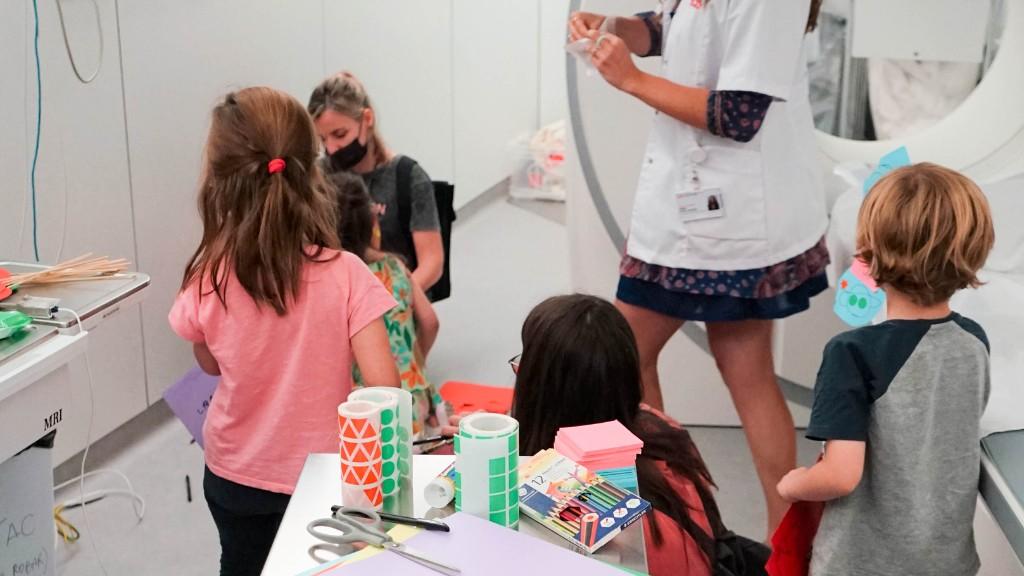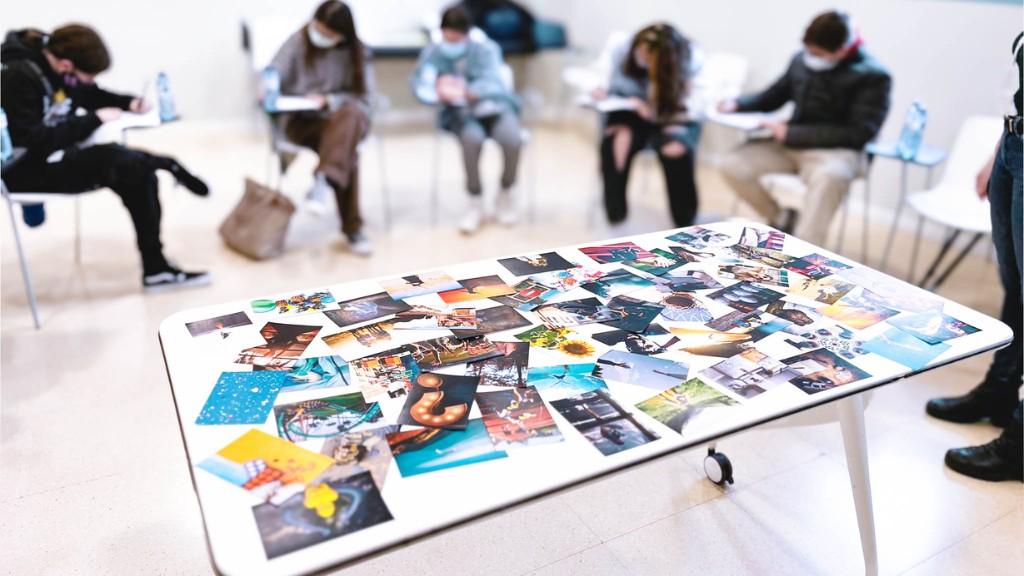
Patients and their families play a crucial role in the Hospital’s culture and strategy, as well as in leveraging transformation and change in the organisation.
Listening to patients as a guideline for leveraging transformation
In order to bring about this focus, experts in design thinking methods joined the Hospital in 2015. Later, they formed a team in the Quality and Patient Experience Department, which is spearheading this culture of the active involvement of patients and their families by working in partnership with healthcare departments, the nursing and medical teams, and other front-line workers.
The main aim of the Patient Experience Area is the co-creation of a care model and to bring about change towards a culture of continuous improvement, a process that entrails two main factors: empathy and design focused on people.
The Department is made up of a team with a wide range of qualifications and additional training in fields such as anthropology, design and engineering, as well as work experience in different sectors that enable then to take on projects with a holistic approach, for which they work alongside the Processes Department and the User Service Department.
What is the patient experience at SJD Barcelona Children's Hospital?
The patient experience covers the sum of all the interactions between patients, families and the employees who take care of them, beyond the clinical and bio-medical needs of patients.
In order to focus on patients and their families, and to involve them in giving a suitable response to their needs, it is essential to understand their experiences and to assess our care model. Listening to them and understanding the critical points of their experiences provides us with transformative and strategic insights.
Methodological principles and focus
In order to change, improve and innovate the experiences of patients, their families and employees as a whole (in and outside the Hospital):
- We combine different methods (design thinking, future thinking, agile thinking, etc.) inherent to design, processes, services and experiences.
- We adopt techniques from the fields of the social sciences, psychology and medical examination, as well as creative processes to ascertain needs (pain points, barriers, needs, current and future aspirations).
- We work on projects using co-design, experimentation and interaction.
We focus on people, patients, families and employees
This requires an empathetic, creative, participatory and cooperative frame of mind.
This requires flexibility, drive and interaction to bring about ongoing improvement.
Multidisciplinary methodological approach
We work using a process and methodological approach that melds lean management and design thinking by facilitating the interaction between patients and other stakeholders in the design of processes and the patient experience. The lean management approach focuses on fine-tuning processes and their feasibility, whilst design thinking explores and identifies the needs, questions, concerns and preferences of patients and their families.
What techniques do we use?
Depending on the type, the aims, scope and stage of a project, we use a combination of different techniques:
The Department’s main metrics
Completed projects
Patients and families directly involved in projects
Patient and family interviews
Interviews with professionals
Observations to patients, families and professionals
Co-creation dynamics and focus groups with patients, families and professionals
Quantitative assessment surveys
Year 2023
Projects
The projects that we work on are carried out with the assistance of the internal processes and user service teams, thanks to infrastructures, systems, innovation, doctors and nurses, patients and families, and external experts. They cover a range of categories:
Exploration and co-design for improving and innovating the surroundings and comfort in treatment rooms.
Exploration and co-design of digital channels for the Hospital and its employees to arrange care and contact patients and their families.
Exploration of hypotheses, endorsements and the generation of know-how to improve and innovate the experience of patients and employees.
Exploration and co-design of solutions for improving and innovating communications, listening, dealings with people, interactions, and the design of new services and other forms of care.
Exploration and co-design of programmes and interventions intended to improve the employee experience.
Some of our projects
Exploring the needs of users to help better define the design criteria for the new monographic paediatric cancer facility, the SJD Pediatric Cancer Center Barcelona.
The design of the SJD Pediatric Cancer Center Barcelona
The Patient Experience Unit is exploring the needs of users to help better define the design criteria for the new monographic pediatric cancer facility, the SJD Pediatric Cancer Center Barcelona.
Task
To explore the needs of users to better define the design criteria for the new monographic pediatric cancer facility, the SJD Pediatric Cancer Center Barcelona.
Methodology
This is a multimethod approach, incorporating various techniques such as in-depth interviews, experience diaries, focus groups, shadowing, co-design and validation sessions with patients and families, brainstorming workshops with professionals and stakeholders, and assessment interviews with child-friendly methodologies.
Indicators
Results/Impact
Establishing the design criteria for transforming the spaces within the facility, creating a more relaxed and pleasant atmosphere during waiting times and promoting improved wellbeing.
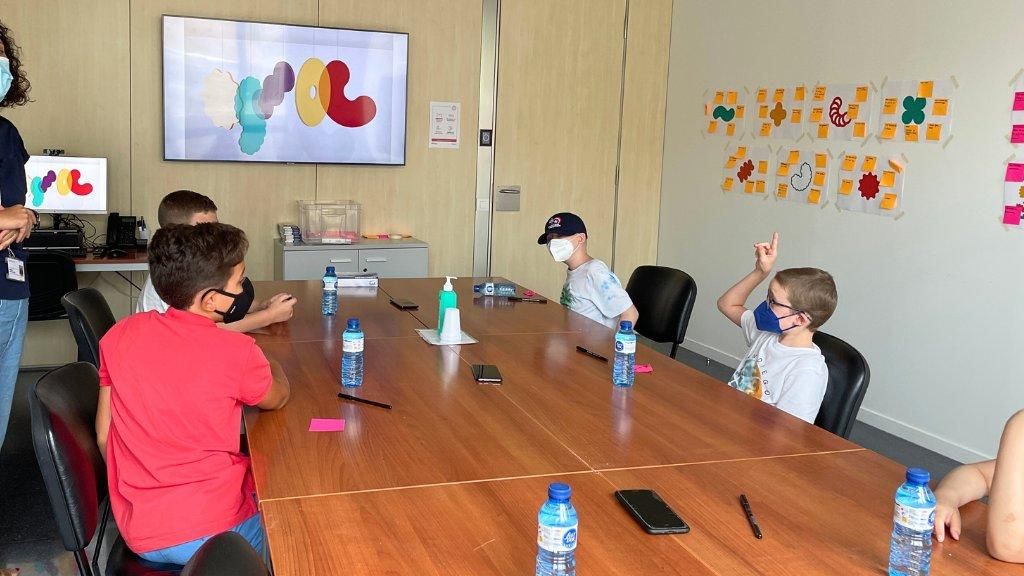
Assessment of the current situation in the Neonatal Unit to develop a strategy that will allow us to establish which improvements can be made to the design and layout of the unit.
Neonatal Unit Revamp
Task
Assess the current situation in the Neonatal Unit to develop a strategy that will allow us to establish which improvements can be made to the design and layout of the unit. The team wanted to take a closer look at the patterns, behaviours and needs of the families we treat in order to improve our service offering, as well as the feel and usage of new spaces.
Methodology
- Interviews with unit staff and visits to the premises.
- Analysis of NPS data and a review of unit surveys to identify patterns and trends.
- Literature reviews to find out about good practices followed by other neonatal units across the world.
- In-depth interviews with 32 families with experience of the Neonatal Unit and who represent the various patient types identified.
Indicators
Results/Impact
- The addition of family rooms, where mothers, fathers and other relatives can cook, spend free time, work, shower, and most importantly, relax.
- Setting up individual rooms, primarily for use in long-term stays at the unit.
- Offering a training programme to teach families how to care for newborns, both during their time in the unit and when they return home.
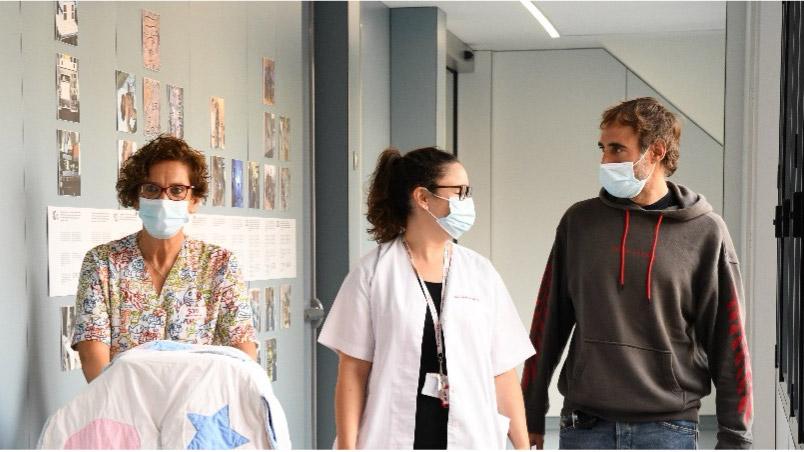
To measure the experience of professionals joining the Hospital in order to identify possible opportunities for improvement.
New onboarding process for new staff members
Task
Assess the experiences of professionals who join SJD to identify potential areas for improvement to the onboarding process and take them into consideration during the redesign of the process, all while bearing in mind the needs of staff.
Methodology
- Meeting with staff members who shared their experiences.
- Identification of the three phases that make up the new staff onboarding process: ‘Pre-incorporation’, ‘Landing’ and ‘Follow-up’.
- Exhaustive research into how other businesses carry out their onboarding processes for new staff.
- Interviews with hospital staff with recent experience of the former onboarding process.
- Sending an automatic experience feedback survey to new staff members after three weeks at the hospital.
Results/Impact
- Ensure that new staff members receive all the information relating to their contract that they may need.
- Define the appropriate channels and format to be used when providing this information.
- Ensure that staff members have all the information they need at their disposal when joining the team.
- Ensure that the new staff member has access to all necessary resources at each step of the onboarding process.
- Guarantee that professionals obtain access to all the training and follow-up they need.
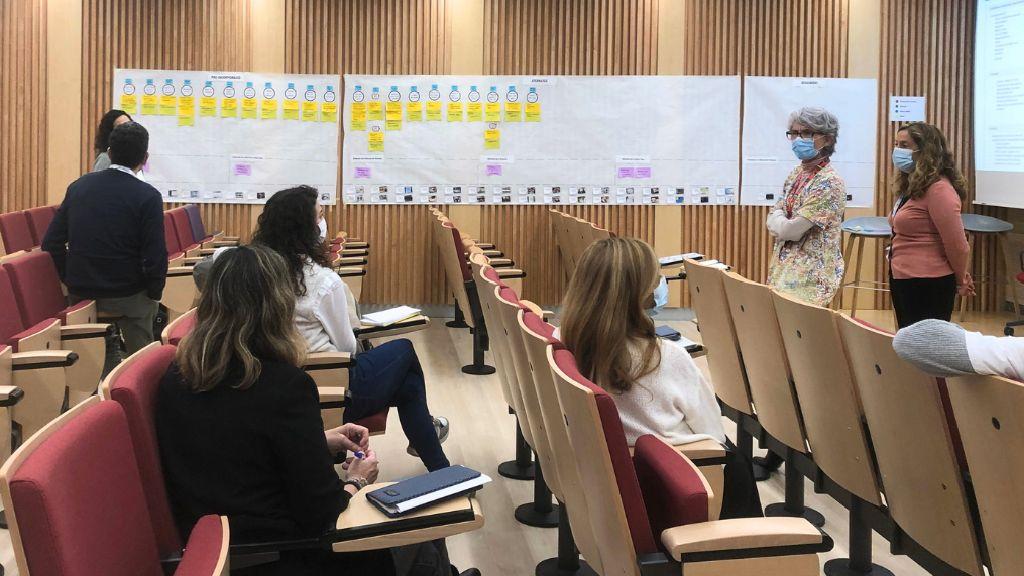
How was the transition programme to the adult hospital adjusted to the needs and requirements of patients and their families?
Adaptation of the Adult Hospital Transition Programme
Task
Professionals wanted to adapt the programme for patients transitioning to adult hospital facilities to make it better suited to the needs of patients and families.
Methodology
- Set up an annual experience feedback survey to send to patients and families. Doing so will provide the transition programme with yearly data regarding the strengths and areas for improvement based on patient experience.
- Sending a survey to hospital staff involved in the programme to find out their views and how they coordinate both with other programme staff and also with staff at the adult hospitals.
- Creation of a transition guide that allows families and patients to inform themselves about each step of the programme, as well as answering frequently asked questions.
Indicators
Results/Impact
- Launch an annual survey to ensure ongoing improvement.
- Establish work lines for the future of the transition programme.
- Create an online transition guide for patients and families.
- Provide psychosocial support throughout the entire transition.
Taking into account the views of sickle cell disease patients and their families/caregivers through a design thinking process.
Empowerment strategy for patients with sickle cell disease
Task
- Listen to patients with sickle cell disease and their family members/caregivers through a design thinking process. This should achieve improved quality of care by identifying patient/family archetypes alongside areas for improvement from time spent at the hospital.
- Establish the best time and place for improved healthcare communication, information and education.
- Design materials that help patients and their families be properly informed.
Methodology
- Taking a standardised approach to the disease through initial research and interviews with staff from the Hematology Department.
- In-appointment observation and in-depth interviews at the patient's home to collect first-hand experiences; understanding cultural and linguistic differences and the environments that are familiar to the patient (at home, school, etc.)
- Specify improvement actions in each category of needs that is detected.
- Develop a prototype for the new training plan for patients with sickle cell disease and their families.
Indicators
Results/Impact
- Create a training plan that involves the participation of several professionals, or the possibility of at-home appointments for patients.
- Design tools that allow medication dosages to be adapted and actions to strengthen the relationships between patients.
- An interactive informational booklet with activities for children and teenagers with sickle cell disease to validate their knowledge of the disease, reducing communication barriers between various cultures.
Testimonials
Alliances and partnerships
A major aspect of the team’s work involves networking and partnerships. This entails promoting and implementing actions and initiatives common to different services and departments in an organisation, as well as to various external bodies and stakeholders for co-creating value propositions.
These partnerships enable us to exchange points of view, resources and know-how with other domestic and international stakeholders related to the field of healthcare and other sectors (research, innovation, education, technology, etc.). This is why we belong to a work group that is looking into the patient experience of the international network, the European Children’s Hospitals Organisation (ECHO),and we work on projects with businesses and organisations.
Team

